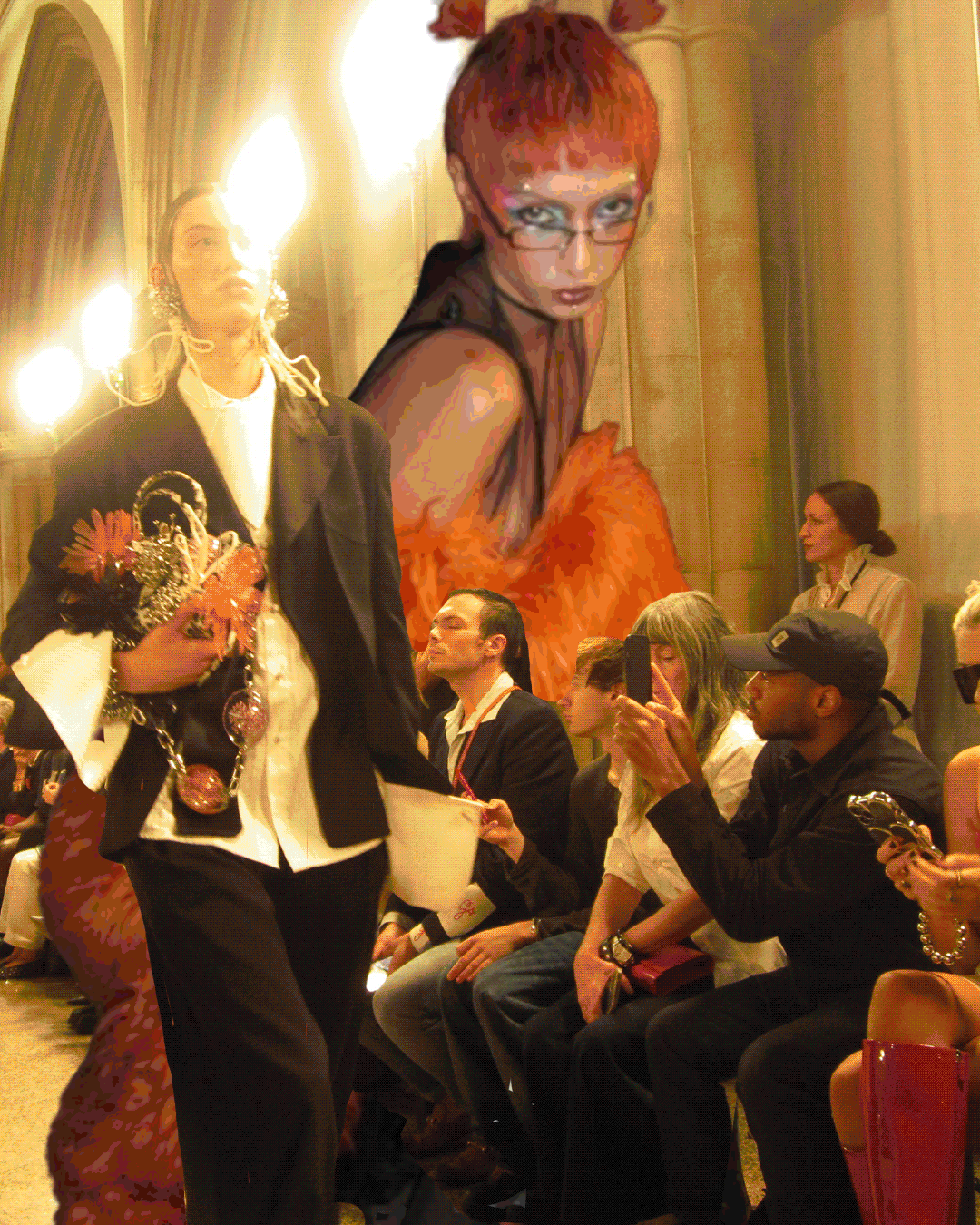Stitches in no time
- Share via
BEGINNING knitters, seize the moment: Runways from New York to Paris have been filled with scarves made of yarn as thick as your thumb, chunky cardigans and wraps, fat cables woven into jackets. The look is terrific, and as anyone who has ever picked up a needle knows, it is the easiest kind of knitting to do yourself.
Now, a designer, Wenlan Chia, is spilling the secrets in a new book, “Twinkle’s Big City Knits.” Chia launched Twinkle knitwear in 2000; she followed with a ready-to-wear line and a New York runway show in 2003. Her first book translates many of her signature chunky designs for the home knitter. And it’s as fun to read as a fashion magazine, with gorgeous photographs of the designs, which are modeled and shot like a fashion layout, as well as straightforward instructions and terrific graphics.
Chia’s designs are knit on giant needles, with balls of yarn the size of basketballs. They knit up quickly, in days or sometimes hours, and all you need to know how to do is cast on, knit and purl. Fiat fashion.
I spent three days testing two patterns — a scarf that looked remarkably like the one in Giles Deacon’s fall show, and a stylish tuxedo-style sweater coat. Yes, it was possible to make both of them that quickly. Even better, Chia’s “recipes” were easy to follow, and they really worked.
A glossy section details the 31 designs; additional pictures show more angles and a color-highlighted box gives a quick read of the specifics — measurements, gauge, materials, special stitches. Chia gives visual patterns, with graphics and measurements, as well as text instructions. (The book also includes how-to’s on basic cables, reverse stockinette stitch, buttonholes and pom-poms.)
One look at the model in the latest skinny jeans and open-toed shoes wearing Chia’s tuxedo sweater and there was no resisting it. The sweater is a fabulously inventive number knit from ropey wool into a huge rib that bends to form the tails of a tuxedo coat. Knit from the top down (unlike traditional sweaters, which knit up from the bottom), the jacket is a ribbed rectangle knit on circular needles, as are most of the designs in the book. (Circular needles are often easier to use; they don’t drop stitches as much and eliminate a lot of seams.) The sleeve stitches are put on a holder, then knit after the body is finished; the flare of tails is formed by only a few perfectly spaced increases. A short cable band is sewn onto the top to form a kind of loop.
It’s an ingenious pattern, with an economy of space and design that makes it both easy to knit and effortless to wear. That the pattern doesn’t bother to include directions for an oversize button or hidden snaps to fasten the front doesn’t seem an oversight. It’s as if the designer knows that anyone wearing the piece would instinctively reach for a yard sale brooch, an oversize brass safety pin, even an unusual hairclip for the job.
There are a few minor problems scattered through the pages: an extra stitch in the ribbing in one pattern, directions to use a circular needle when double-pointed needles would work far better in another. And then there are the sizes, which at first glance seem geared to people as thin as the models. But the patterns are purposefully oversized and both patterns I tested ran large. In fact, this is fashion more easily suited to a full range of types and sizes than you’ll find in most trendy stores.
Will it be outdated next year? Maybe. But why not keep your knitting books as current as you keep your fashion magazines?
*
HOW TO MAKE THE DIAMOND SCARF:
Adapted from “Twinkle’s Big City Knits”
by Wenlan Chia
*
Time: About 6 hours
Measurements: 10 by 120 inches, plus fringe
Materials: Two skeins super bulky weight yarn (such as Cascade Magnum), about 150 yards, or 500 grams total
Needles: U.S. size 35 or 36
Crochet hook: Size Q, for fringe
Gauge: 9 1/2 stitches and 9 1/2 rows equals 6 inches in pattern (gauge isn’t crucial)
Special stitches:
K2tog: Knit two stitches together
SSK: Slip, slip, knit two together (as if to knit, slip one stitch over to the second needle, one at a time, twice; then knit the two stitches that you’ve slipped over together, using the needle in your left hand)
YO: Yarn over (using your right hand, wind the yarn over the top of the right-hand needle and back to the rear of the work without knitting it)
Make the scarf:
Cast on 15 stitches.
Row 1 (RS): k1, p1, k1 (ssk, yo) two times, k1, (yo, k2tog) two times, k1, p1, k1
Row 2 and all other even rows: k2, p11, k2.
Row 3: k1, p1, (ssk, yo) two times, k3, (yo, k2tog) two times, p1, k1
Continue in this pattern until the scarf measures 120 inches, or desired length. Bind off and weave in the ends.
Make the fringe:
Cut 23 pieces of yarn, each 24 inches long. Working with two strands held together and a crochet hook, loop through and attach eight sections of fringe along cast-on edge and eight sections along bound-off edge.







